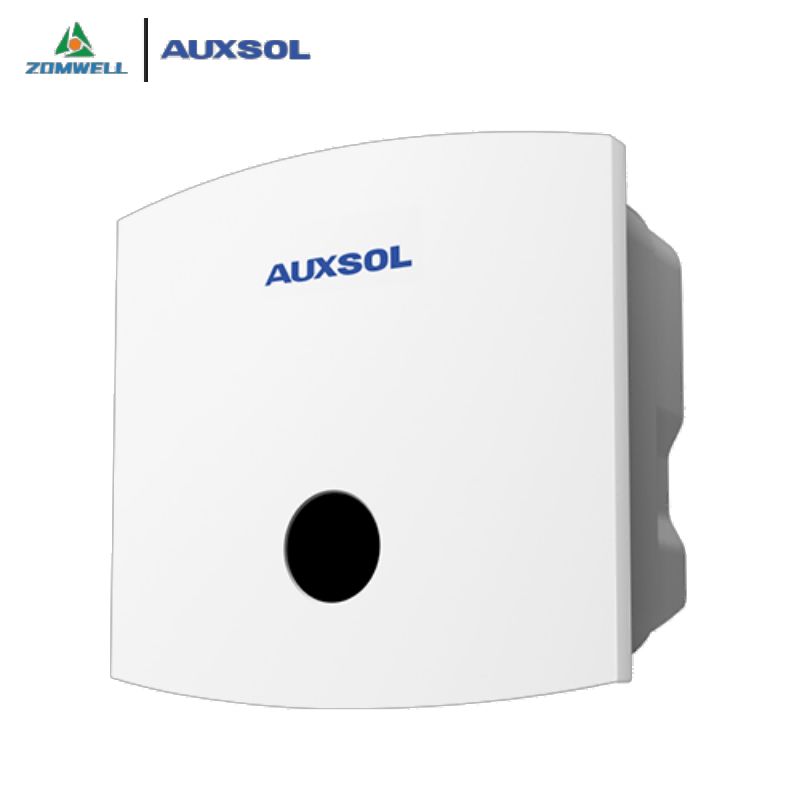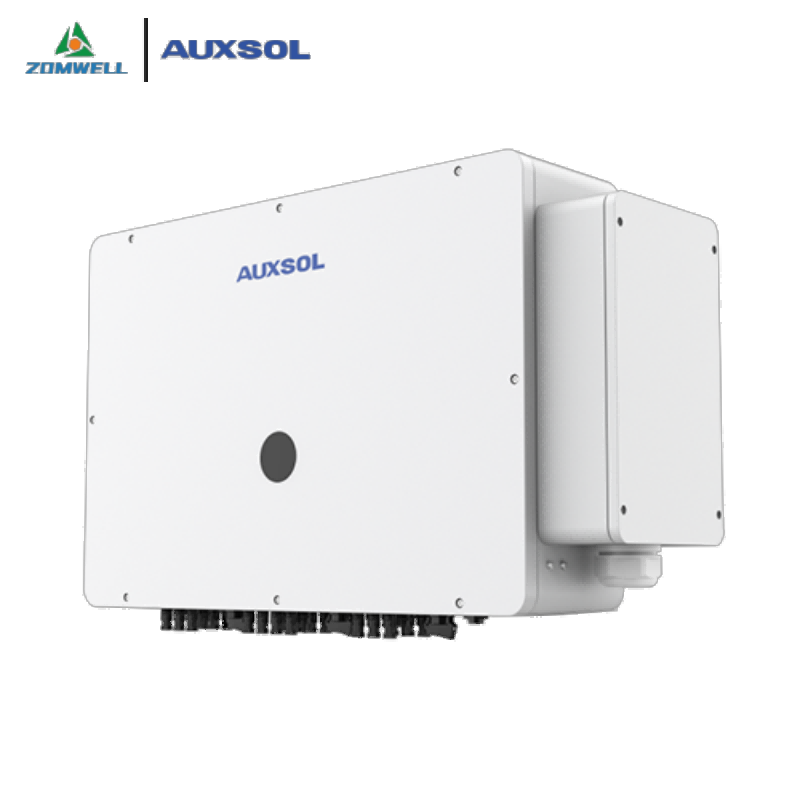
One Minute to Understand Home PV Energy Storage
2023-12-28 14:28One Minute to Understand Home PV Energy Storage
Smart home photovoltaic (PV) energy storage systems are on the rise, offering households 24/7 green power, reducing electricity bills, and enhancing living standards. These systems harness solar energy by day for night use and provide backup during outages, maintaining consistent power for home needs. They charge when demand is low and can balance energy use to save costs, functioning like personal power plants independent of urban grid pressures.

What are the general components of such a powerful home PV energy storage system and what does it mainly rely on to operate? What are the classifications of home PV energy storage systems?
What is home PV energy storage system?
A home photovoltaic energy storage system is a system that combines a solar photovoltaic conversion system with an energy storage device that converts solar power into storable electricity. This type of system allows homeowners to generate electricity during the day and store the excess for use at night or in low-light conditions.
Classification of home PV energy storage systems
Home energy storage systems are currently categorized into two types, one for grid-connected home energy storage systems and one for off-grid home energy storage systems.
1、Grid-connected home energy storage system
It consists of five major parts, including: solar arrays, grid-connected inverters, BMS management system, battery packs, and AC loads. The system adopts a hybrid power supply of PV and energy storage system. When the utility power is normal, the load is powered by the PV grid-connected system and the utility power; when the utility power is cut off, the load is powered by the joint power supply of the energy storage system and the PV grid-connected system. The grid-connected home energy storage system is categorized into three working modes, Mode 1: PV provides energy storage, and the residual electricity is fed into the Internet; Mode 2: PV provides energy storage, and part of the users use electricity; Mode 3: PV only provides part of the energy storage.
2、Off-grid home energy storage system
It is independent and does not have any electrical connection with the grid, so the whole system does not need a grid-connected inverter, and the PV inverter can meet the requirements. The off-grid home energy storage system is divided into three working modes, Mode 1: PV provides energy storage and user electricity (sunny days); Mode 2: PV and storage battery provide user electricity (cloudy days); Mode 3: storage battery provides user electricity (evening and rainy days).
Whether it is a grid-connected home energy storage system or an off-grid home energy storage system, it cannot be separated from the inverter, which is like the brain and heart of the system.
What is an inverter?

An inverter is a typical component in power electronics, capable of converting DC power (batteries, storage batteries) into AC power (generally 220v50HZ sine or square wave). In layman's terms, the inverter is a device that converts direct current (DC) into alternating current (AC). It consists of an inverter bridge, control logic and a filter circuit. Common components are rectifier diodes and thyristors. Almost all household appliances and computers have rectifiers installed in the power supply of the appliance, DC to AC, called inverters.
Why do inverters hold such an important place?
Inverters are crucial because AC transmission is more efficient than DC, reducing energy loss in electrical systems. Since it's impractical to decrease wire resistance, lowering current by converting DC to AC and stepping up voltage saves energy. Solar power systems produce DC, but many appliances need AC, which inverters provide. Inverters, the core of solar systems, convert DC to usable AC, integrating safety features and power management components, and their development is tied to advances in power electronics and control technologies.
Classification of inverters
Inverters can be broadly categorized into the following three types:
1. Grid-connected inverter
Grid-connected inverter is a special kind of inverter, in addition to converting DC into AC, its output AC can be synchronized with the frequency and phase of the utility power, so the output AC can be returned to the utility power, i.e., the grid-connected inverter has the ability to synchronize the interface with the utility line. This inverter is designed to transmit unused power to the grid without the need for batteries and can be equipped with MTTP technology in its input circuit.
2. Off-grid inverters
Off-grid inverters, usually mounted on solar panels, small wind turbines or other DC power sources, convert DC power into AC power that can be used to power a home, and can use energy from the grid and batteries to power electrical loads. It is called "off-grid" because it is independent of the utility and does not require any external power source.
Off-grid inverters were originally designed to be battery-powered systems for regional microgrids. With current inputs, DC inputs, fast charging inputs, high-capacity DC outputs and fast AC outputs, an off-grid inverter can store energy and convert it to other uses. It uses control logic to adjust the input and output conditions to ensure that the best efficiency is provided from sources such as solar panels or small wind turbines, and optimizes the quality of the energy by using a pure sine wave output.
Off-Grid Inverter For off-grid solar systems, batteries are mandatory, through which energy is stored for use at sunset or in the absence of electricity. Off-grid inverters also help reduce dependence on the conventional grid, which often leads to power outages, blackouts, and energy instability that utilities cannot eliminate.
In addition, an off-grid inverter with a solar charge controller means that the solar inverter has an internal PWM or MPPT solar controller that allows the user to connect the PV inputs in the solar inverter and check the PV status on the solar inverter display, making it easy to connect and check the system. Off-grid inverters are performing self-testing in backup generators and batteries to ensure complete and stable power quality. They are mainly used to provide power for some residential and commercial projects, where low wattage ones are used to power appliances in homes.
3. Hybrid Inverter
For hybrid inverters, there are usually two different meanings, one is an off-grid inverter with a built-in solar charge controller, and the other is an integrated on-grid and off-grid inverter, which can be used for both grid-connected and off-grid photovoltaic systems, and whose batteries can be flexibly configured.

Main functions of the inverter
1、Automatic operation and shutdown function
Throughout the day, as the sun angle gradually rises, the intensity of solar radiation increases, and the PV system can absorb more solar energy, and once the output power required for the inverter to work is reached, the inverter can start running automatically. When the output power of the PV system becomes smaller and the output of the grid-connected/storage inverter is 0 or close to 0, it will stop running and become standby.
2、Anti-islanding effect function
Grid-connected photovoltaic power generation process, photovoltaic power generation system and power system grid operation, when the public power grid due to abnormal and blackout conditions, photovoltaic power generation system if you can not stop working in a timely manner or disconnected from the power system, still in the power supply state, known as known as the islanding effect. The islanding effect is dangerous for both the PV system and the power grid.
Grid-connected / energy storage inverter internal anti-islanding protection circuit, can be real-time intelligent detection of the grid to be integrated into the voltage, frequency and other information, once the public grid is found due to abnormalities, the inverter can be based on different measured values in the corresponding time to disconnect the current, stop the output, and report faults.
3、Maximum power point tracking control function
Maximum power point tracking control function, i.e. MPPT function, which is the core key technology of grid-connected/storage inverters, refers to the inverter's ability to track and find the maximum output power of components in real time.
The output power of a PV system is subject to change due to a variety of factors, and it is not always possible to maintain the nominal optimal output power.
The MPPT function of the grid-connected/storage inverter can track the maximum power output of the components in real time, and through intelligent adjustment of the system working point voltage (or current), make it closer to the peak power point, maximize the power generated by the PV system, and then ensure that the system can work continuously and efficiently.
4、Intelligent string monitoring function
On the basis of the original MPPT monitoring, the grid-connected/storage inverter has realized the intelligent string detection function. Compared with the MPPT monitoring, the string detection monitors the voltage and current accurately to each branch string, so that the user can clearly view the real-time operation data of each string.
